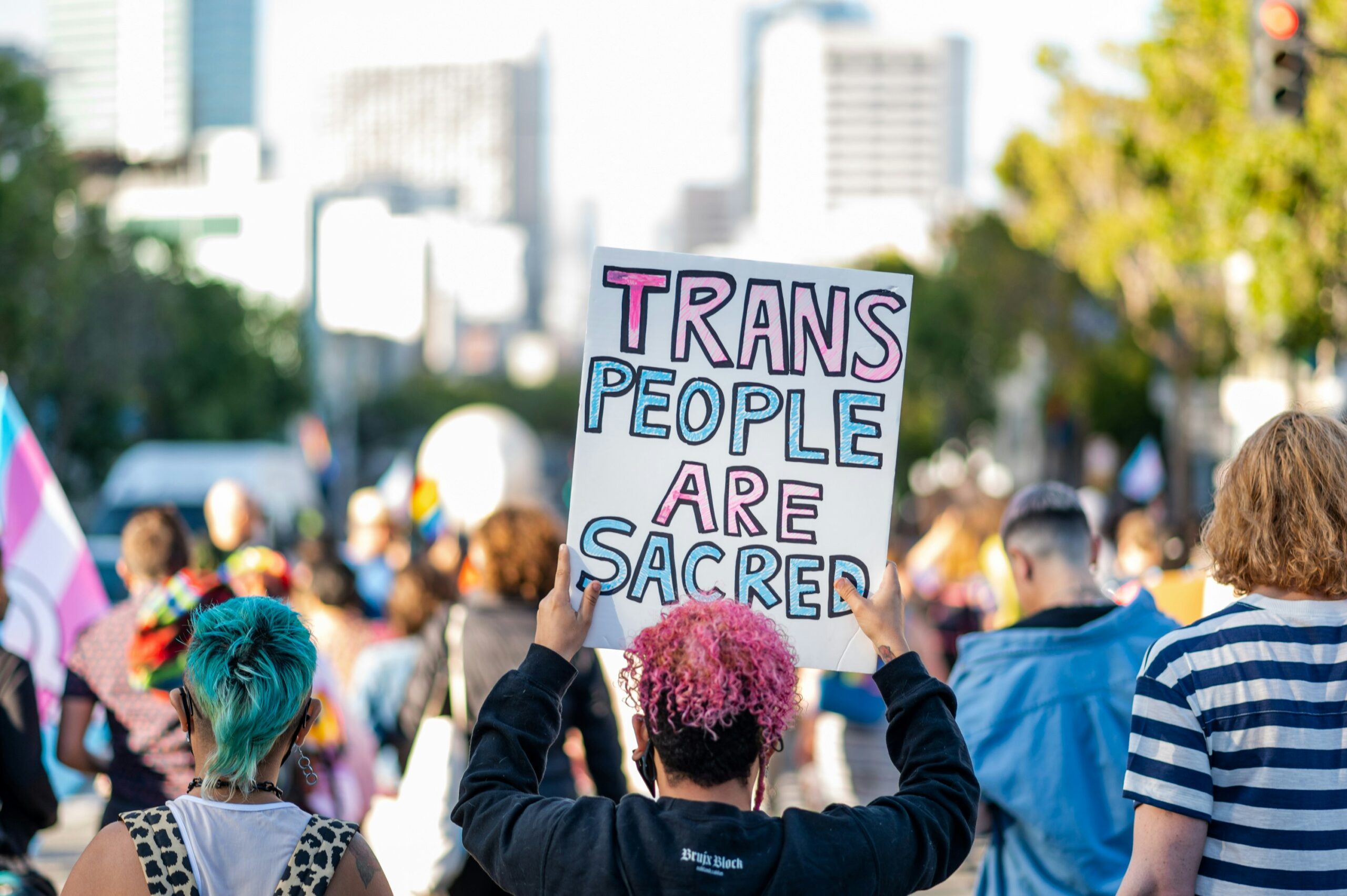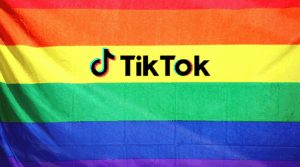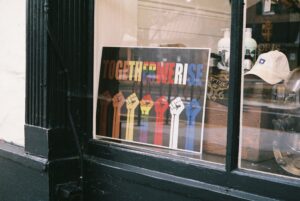There are many people who have changed the course of history whose names and accolades we are not aware of. In terms of queer rights icons, many have heard of stand-out figures such as Harvey Milk, Laverne Cox, Elton John, RuPaul, and Divine. These are just a few people who have impacted the LGBTQ+ rights movement, most notably in terms of visibility. However, because of the social climate, transgender (trans) rights in particular are under attack and it seems more imperative than ever to highlight a handful of underrated icons.
Here are just a few transgender trailblazers, their significance in history, and the reasons you should know them:
1. Claude Cahun (1894-1954)
“Under this mask, another mask. I will never finish lifting up all these faces.”
Claude Cahun was a gender nonconforming surrealist artist and writer. They used photography to explore identity including androgyny and blurring the borders between binary gender. They also strayed from traditionally “beautiful” art by focusing on multimedia projects, including one Surrealist exhibit that prioritized the implications of everyday objects. Constantly questioning the status quo, Cahun released a joint photography-and-prose publication with their longtime creative and romantic partner, Marcel Moore. This wound up outing the pair of them in 1919 France.
Cahun also displayed pro-Marxist ideas through their multimedia projects. Of Jewish descent, Cahun fled with Moore from continental Europe during World War One. They landed on the island of Jersey, letting people think they were sisters as they walked their cat on a leash. After Germans occupied the island, the duo passed out anti-Nazi leaflets, placing them in soldiers’ pockets and vehicles. They were eventually sentenced to death for this, but stayed in prison until the island was liberated the following year. Moore and Cahun lived the rest of their lives on the island, which now hosts the largest collection of Cahun’s artwork.
2. Jackie Shane (1940-2019)
Born in Nashville, Jackie Shane ended up settling in Toronto where she felt free enough to start a nightclub and begin her recording career. Her music blended rock and roll with rhythm and blues. In 1963, her version of William Bell’s “Any Other Way” put her at the #2 spot on the Canadian pop music chart. As a visible Black transgender woman, she broke barriers everywhere she went, exuding confidence alongside her monumental contributions to R&B.
Jackie knew she was transgender from a young age, when she went to school in makeup and enjoyed local drag queens and carnival acts. At the time, queer and nonbinary musicians and artists were especially inspiring. These acts including Little Richard, who performed as Princess Lavonne in a traveling tent show. In public life, Shane dodged questions about gender while staying true to herself. As her relationship with her collaborators began to deteriorate, she moved to Los Angeles and cared for her mother.
She retreated from society for many years after her mother died. Shane passed in 2019 while writing songs and gearing up to return to the studio. Concerned about the state of modern trans rights, she told her story for the “Any Other Way: The Jackie Shane Story” documentary in 2024. The same year, Nashville honored Shane with a historical marker to pay homage to her story.
3. Magnus Hirschfield (1868-1935)
Magnus Hirschfield was a gay German physician and sexologist born in 1868. In 1897 he co-founded the world’s first LGBTQ+ rights organization, known as the Scientific Humanitarian Committee. In 1919, he opened the Institut Für Sexualwissenschaft, or the Institute for Sexual Science, the first of its kind. The Institute drew the attention of everyone from teachers to politicians. It was groundbreaking in that it not only led research efforts but also treated STIs and offered public sex education.
While not transgender himself, Hirschfield was an early advocate for transgender healthcare, providing counseling for what was known as “sexual transitions.” Eventually in 1933, Nazis shut down the Institute and burned his works at Berlin’s Opera Square. Even after that, he persevered and tried opening another sexual science institute in Paris. Although he was unsuccessful, his fellow sexologist Harry Benjamin continued Hirschfield’s research in the United States. Here, his perspectives had a lasting impact on sexuality studies.
Hirschfield was short-sighted when it came to race. He often chose to prioritize discussions of sex and gender instead of examining overlapping identities. Problematic but notable, the Nazis were unable to erase his ideas from history. Hirschfield’s work is just one piece in the ongoing fight for trans rights.
4. Lynn Conway (1938-2024)
“Why not question everything?”
Lynn Conway is a transgender computer scientist whose work in microchip design revolutionized modern computing. She simplified the design of microchips, creating algorithms that took computer scientists past the pencil-and-paper method. This allowed for countless chip designs and made it accessible instead of just available for private firms. It’s since led to the ability to make small computing devices.
With two Columbia degrees, she worked at IBM until they fired her in 1968 when they learned she was trans. It took until another transgender employee came forward in 2020 for the company to issue an apology.
After retiring from her position as associate dean at University of Michigan, she continued speaking out for trans rights. Even as far back as the 1990s, she spoke with people who had questions about transitioning and trans issues. In 2023, the year before her death, she recalled how much fun she had had as an engineer, even though she suffered setbacks.
5. Public Universal Friend (1752-1819)
“There is nothing indecent or improper in my dress or appearance; I am not accountable to mortals.”
Born in Cumberland, Rhode Island, the Public Universal Friend answered the question of “male or female?” with “I am what I am.” A gender nonconforming preacher, the Friend grew up in a Quaker environment.
After falling ill with a fever in 1776, the Friend said they had died and been brought back to life as a new being who was neither male nor female. Instead, they were to be called the Public Universal Friend and their purpose was to serve God. The Quakers disowned them after this, leading the Friend to find followers of their own: the Universal Friends.
Here, women played a more active role than in many other religious groups at the time. Together with their followers, the Friend established Jerusalem in New York as a safe space for the group. When that failed due to land ownership disputes, the Friend was summoned to court on attempted charges of blasphemy. It took three attempts to get them there, ending with a dramatic count of thirty men showing up at night with an ax and trying to carry the Friend away in an oxcart. However, even this grand plan failed when a doctor said the Friend was too feeble to be moved.
Eventually, the Friend appeared before court. The judge not only ruled that no offense was committed, but also invited the Friend to give a sermon for the audience. (Talk about an icon.).
6. Sylvia Rivera (1951-2002)
“We cannot depend on nobody, except our own trans community, to keep pushing forward.”
You may have heard of Sylvia Rivera playing a part in the Stonewall Uprising of 1969, but I found it important to bring more context to her story. She spent many years of her life on the streets after running away from home at 11. In 2001, she stated that she did not throw the first Molotov cocktail at the police, but she did throw the second one.
In addition to leading protests against police raids, Rivera also dealt with prejudice from within the LGBTQ community. She campaigned with the Gay Activist Alliance for nondiscrimination laws, but was shunned by the group’s cis white men. They attempted to downplay the role that Rivera and other trans people of color played in Stonewall and other protests. At the same time, however, they took credit for their hard work in making news and spurring change.
In 1970, Rivera, along with fellow activist Marsha P. Johnson, founded the Street Transvestite Action Revolutionaries (STAR). This included creating shelters for trans people in need. Although STAR itself was rather short-lived, the two continued their activism and paved way for later trans activists, such as the Queens Liberation Front, to fight discriminatory laws in New York.
In 1973, the organizers of the NYC Pride March banned drag queens. Even though she wasn’t allowed to speak, Rivera still marched ahead of the parade and grabbed the mic, declaring that drag queens were the headliners of the gay liberation movement.
7. Miss Major Griffin-Gracy (b. 1940s)
“I didn’t fight all those years ago in Stonewall just to turn around and let it go now.”
An author and activist, Miss Major Griffin-Gracy realized she was trans at a young age. She met a drag queen who taught her how to dress up and apply makeup, but continued to dress in men’s clothing in public. In college, her roommate told everyone he found Miss Major’s dresses, which led to the college expelling Miss Major. After going through this experience twice, Miss Major moved to New York City in 1962. She became a sex worker and began performing as a showgirl.
Miss Major Griffin-Gracy was also present at the Stonewall Inn on June 27, 1969, when the police raided the bar. She stresses that trans activists of color were doing the work of gathering momentum long before Stonewall, which is what many people associate as the beginning of the LGBTQ rights movement.
Eventually, Miss Major became a mentor to drag performers, helping them access resources such as housing and education. Since 1995 she has worked in HIV prevention and outreach, and now is part of the TGI Justice Project, which supports trans people in prisons. For over 50 years Miss Major fought for trans rights, and she shows no signs of stopping.
Check Out:
Uncertain Futures: The LGBTQIA+ Community’s Continuous Battle for Equal Rights











Be First to Comment